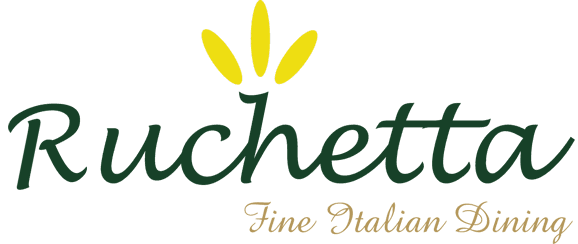Wine List
PROSECCO, METODO CLASSICO & FRANCIACORTA
Prosecco | Franciacorta & English Sparkling
- Prosecco DOCG Vadobbiadene £45 Glass 125 ml
£10
- Prosecco DOC Rose` Brut £45
- Brut Metodo Classico, Costaripa £66
- Brut Rose Metodo Classico, Costaripa
- Brut Franciacorta DOCG, Contadi Castaldi £69 Glass 125 ml £16
- Rose Franciacorta DOCG, Contadi Castaldi £69
- Cuvee Prestige Franciacorta, Ca Del Bosco £90
- Cuvee Prestige Franciacorta Rose, Ca Del Bosco £96
- Annamaria Clementi Extra Brut, Franciacorta, Ca Del Bosco £380
- Antinori Cuvee Royal Franciacorta £75
- Bellavista Franciacorta "La Scala" £160
- Engelmann Cuvee, English Oak Vineyard £95
- Chinkapin Rose, English Oak Vineyard £95
BIANCO
14. House White £32
Carafe 425 ml £18 | Small Glass 125 ml £.6.5 | Large Glass 175 ml £8.5
15. Cirò Bianco Librandi DOC (Calabria) £37
Carafe 425 ml £22 | Small Glass 125 ml £8.5 | Large Glass 175 ml £11
16. Castel Firmian Pinot Grigio Mezzacorona (Trentino) £37
Carafe 425 ml £22 Small Glass 125 ml £8.5 | Large Glass 175 ml £11
17. Verdicchio Classico Umani Ronchi ( Marche) £47
Carafe 425 ml £28 Small Glass 125 ml £11 Large Glass 175 ml £13
18. Gavi di Gavi Docg Bersaglio (Piemonte) £52
Carafe 425 ml £29 | Small Glass 125 ml £12 | Large Glass 175 ml £14
19. Grillo, Sicilia DOC, Angelo (Sicily) £32
20. Soave Classico DOC Montresor (Veneto) £32
21. Frascati, DOC Bordolese (Lazio) £36
22. Falanghina, Beneventano IGT (Campania) £38
23. Castel Firmian Sauvignon Blanc Mezzacorona (Trentino) £42
24. Vermentino di Gallura (Sardinia) £43
25. Greco di Tufo DOCG Corte Del Golfo (Campania) £43
26. Pecorino Vellodoro, Umani Ronchi (Umbria) £43
27. Vernaccia di San Gimignano, Isala Bianca, Teruzzi (Toscany) £43
28. Lugana, Pievecroce Costaripa (Lombardy) £45
29. Vespaiolo, Maculan (Veneto) £47
30. Leone D'Almerita, Tasca (Sicily) £53
31. Orvieto San Giovanni della Sala, Classico Superiore, Antinori (Umbria) £63
32. Efeso, Tenuta Rosaneti, Librandi (Calabria) £66
33. Bramito del Cervo IGT Castello della Sala Antinori (Umbria) £69
34. Riesling San Leonardo (Trentino Alto Adige) £86
35. Cervaro della Sala IGT Castello della Sala, Antinori (Umbria) £195
ROSSO
36. House Red £32
Carafe 425 ml £19 | Small Glass 125 ml £7 | Large Glass 175 ml £9
37. Primitivo del Salento (Puglia) £37
Carafe 425 ml £22 | Small Glass 125 ml £8.5 | Large Glass 175 ml £11
38. Pinot Noir, Astoria (Veneto) £39
Carafe 425 ml £23 | Small Glass 125 ml £9 | Large Glass 175 ml £13
39. Montepulciano D`Abbruzzo Umani Ronchi (Abruzzo) £47
Carafe 425 ml £28 | Small Glass 125 ml £11 | Large Glass 175 ml £13
40. Valpolicella Ripasso Superiore Tedeschi (Veneto) £54
Carafe 425 ml £30 | Small Glass 125 ml £12 | Large Glass 175 ml £14
41. Chianti DOCG (Tuscany) £35
42. Nero D`Avola ( Sicily) £35
43. Montepulciano D'Abruzzo £35
44. Valpolicella Classico Montresor (Veneto) £42
45. Teroldega Rotaliano Riserva Mezzacorona (Friuli-Venezia Giulia) £42
46. Cannonau di Sardegna, Argiolas (Sardegna) £48
47. Chianti Classico Lamole Di Lamole ( Tuscany) £52
48. Barbera D`alba Fiulot, Antinori (Piemonte) £52
49. Terre di San Leonardo (Trentino Alto Adige) £52
50. Duca San Felice Classico Superiore Riserva, Librandi (Calabria) £55
51. Rosso Dei Vespa, Primitivo di Manduria (Puglia) £55
52. Rosso di Montalcino, Col D`Orcia (Tuscany) £55
53. Nebbiolo D'Alba Occhetti, Renato Ratti (Piemonte) £58
54. Brentino, Merlot/Cabernet, Maculan (Veneto) £58
55. Nerello Mascalese, Croceferro, Alessandro (Sicily) £58
56. Merlot Sodale, Cotarella (Umbria) £66
57. Malbec, Vie Cave Maremma, Fattoria Aldobrandesca, Antinori (Tuscany) £75
58. 59. Barolo Oddero (Piemonte) £77
59. Long Now, Langhe DOC, Pelissero (Piemonte) £77
60. Brunello Di Montalcino, Col D`Ocia (Toscana) £85
61. Riserva Ducale Oro, Chianti Classico, Gran Selezione (Tuscany) £85
62. Corte Del Lupo, Franciacorta Rosso, Ca Del Bosco (Lombardy) £89
63. Focara, Pinot Noir, Colli Pesaresi, Fattoria Mancini (Marche) £89
64. Amarone Classico Della Valpolicella, Tedeschi (Veneto) £98
65. Carrubo, Primitivo Di Manduria, Tormaresca Antinori 2017 (Puglia) £150
66. Marchese Di Villamarina, Alghero Cabernet Riserva 2013, Sella E Mosca (Sardinia) £180
67. Brunello Di Montalcino, Tenuta Greppone Mazzi, Ruffino 2013 (Toscany) £260
68. Tignanello IGT Villa Antinori 2019 (Tuscany) £290
69. Barolo Bricco San Pietro, Di Valentino 2012 (Piemonte) £390
70. Barbaresco, Sori Tildin, Angelo Gaja 2008 (Piemonte) £980
VINO ROSATO
71. Pinot Grigio Rose £32
72. Ciro Rosato, Librandi (Calabria) £37
73. Rosamara, Chiaretto Del Garda Classico, Costaripa (Lombardy) £49
74. Scalabrone, Rosato Di Bolgheri, Antinori (Tuscany) £55
75. Molmenti Valtenesi, Costaripa (Lombardy) First best Italian rose, by Gambero Rosso. £75

